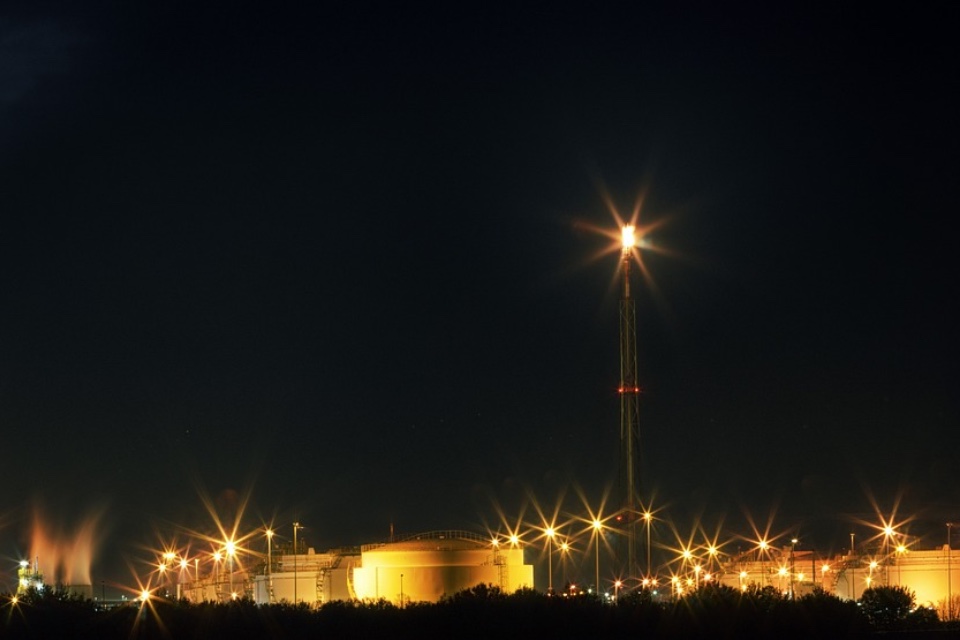Transforming flaring gas to clean hydrogen
https://energymanagementsummit.co.uk/wp-content/uploads/2022/11/gas-flaring-smoke-3108065_1280.jpg 960 640 Guest Post Guest Post https://secure.gravatar.com/avatar/cb2a67f15cd7d053d8e638a1df3fd67f?s=96&d=mm&r=gBy Michael Stusch, CEO, H2 Industries
Gas flaring is now recognized as a major contributor to the emission of harmful gases affecting climate change and society by creating increased incidences of cancer in communities close to flaring sites. Sadly, flaring has been around for more than 150 years since the advent of oil and gas production, occurring when crude oil is extracted underground and natural gas is brought to the surface.
Particularly prevalent in areas with limited infrastructure, this gas is burned off seemingly without regulation. In fact, some 144 billion cubic meters of gas is flared each year, enough to power the whole of sub-Saharan Africa.
The pollutants emitted are highly harmful to humans, according to a recent report by the BBC, and to the environment. Flaring emits black carbon, methane, and volatile organic compounds that pollute the air and have been linked not just to cancer, but deformities in children, lung damage, and skin problems. It contributes to over seven million deaths a year from air pollution. In addition, it is estimated that black carbon is second only to carbon dioxide in terms of its impact on global warming.
This is because it absorbs sunlight, warming the atmosphere, landing on ice and snow, and reducing its ability to reflect light. So, the big question is, what can be done? Fortunately, a solution is on the near horizon.
Overcoming energy waste
According to the World Bank, flaring is a monumental waste of a valuable natural resource that should be used for productive purposes, such as generating power, and that is what technology from H2-Industries, a global energy storage solutions company, can achieve. The company has developed a solution to convert these environmentally harmful flaring gases right at the flare of an oil production field to clean hydrogen and solid carbon.
H2-Industries use pyrolysis technology to convert this environmentally harmful waste product into clean hydrogen. The hydrogen production process from flaring gas is CO2-emission free. Pyrolysis is when a solid (or a liquid) undergoes thermal degradation into smaller volatile molecules without interacting with oxygen or other oxidants. It is essential to understand that pyrolysis is not a phase change but a chemical process. It is a thermal degradation process that occurs under heat and degrades larger molecules into smaller ones.
The technology will be delivered in self-contained 20 or 40-foot ISO containers and can be pre-assembled in a semi-serial production and shipped for installation to the flaring site. The process provides clean hydrogen bound in liquid organic hydrogen carriers (LOHC). LOHC are organic compounds that can absorb and release hydrogen through chemical reactions. LOHCs can therefore be used as a storage medium for hydrogen. H2-Industries has developed and commercialized the use of LOHC to make hydrogen handling safer and cheaper. With LOHC, the volatile hydrogen gas no longer needs to be cooled or compressed in a costly and energy-intensive manner to enable economical transport.
Any process is only as economic and ecological as its primary feedstock, and in the case of H2-Industries, the critical feedstock is a waste product. One crucial requirement for the process is electricity supplied by internal power generation units that do not use fossil fuel energy sources or the grid. CO2-free electricity can be provided either by hydrogen fuel cells that transform the hydrogen produced on-site into electrical power or Organic Rankine Cycle (ORC) units that recover heat from the hydrogen storage in LOHC units and wasted heat from the water gas shift process to produce power for the entire process.
The process can produce up to 100 kg of clean hydrogen and 730 kg of solid carbon from a tonne of flaring gas. A typical, medium-sized oil platform releases 13,500 tonnes of flaring gas annually, and a single H2-Industries ‘Flare to Hydrogen’ container can produce 158 tons of clean hydrogen per year. By processing 100 million tons of flaring gas per year, the amount flared in 2021, ten million tonnes of clean hydrogen can be produced. The clean hydrogen for between $2 and $3 per kg, while market price levels are between $3 and $4 for grey hydrogen and $7 for CO2-emission-free hydrogen.
Clean carbon black
The only by-product of the process is solid carbon black that can be shipped for export to any place in the world using ISO container tanks. Carbon black is mainly used to strengthen rubber in tires. But it can also act as a pigment, UV stabilizer, conductive or insulating agent in various rubber, plastic, coating applications, and other everyday use, including hoses, conveyor belts, shoes, and printing.
Carbon black is usually produced in a high-temperature reactor through a tightly controlled flame-synthesis process that uses oil, and sometimes natural gas, as feedstock. As a result, the production of carbon black, as well as the production of its feedstock, contributes significantly to global warming and environmental pollution.
The H2-Industries process captures clean carbon black, not produced from fossil fuels, but from harmful production emissions with no additional CO2 emissions. This carbon black can be sold on the world market, where the current prices are between $1.5 and $2.5 per kg.
The hydrogenation process
It is crucial that any process can cope with the varying make-up of feedstock. Flare gas composition differs from flare to flare; therefore, the pure methane (CH4) needs to be separated with membranes that remove the various blends of carbon hydrates so that only pure CH4 remains. This CH4 is then cracked in a methane pyrolysis process into clean hydrogen and solid carbon with no CO2 emissions released into the atmosphere.
With pressures between 30 – 50 bar and catalysts specially developed for this application, the LOHC can be hydrogenated; hydrogen can be chemically bound. The resulting hydrogenated LOHC+ can be handled using the known gasoline and diesel fuel infrastructure. The hydrogenation process is exothermic. The waste heat developed in this way can be used in other processes, thus increasing the overall system efficiency. To dehydrate the LOHC+ to release the hydrogen from the liquid again, the LOHC+ passes through a dehydrogenation reactor, which contains the catalyst required for this process.
In contrast to hydrogenation, dehydrogenation is an endothermic reaction. Therefore, the necessary energy must be added and can, for example, be made available within the system by using the clean hydrogen itself or provided by other external heat sources. The dehydrogenated LOHC- can now be returned to the location of the hydrogenation and ‘reloaded’ with hydrogen. The cycle is closed. The LOHC itself is not consumed but reused many times over. The service life is also increased by the possibility of purification as soon as this becomes necessary after various cycles.
According to the World Bank 2022 Global Gas Flaring Tracker, reductions in absolute flare volumes and flaring intensity have stalled in the last decade, despite early solid progress. Impressive reductions in some countries have not offset concerning increases in others. The top ten flaring countries accounted for 75 percent of all gas flaring and 50 percent of global oil production in 2021. Seven of the top ten flaring countries have held this position consistently for the last ten years: Russia, Iraq, Iran, the United States, Venezuela, Algeria, and Nigeria. The remaining three, Mexico, Libya, and China, have shown significant flaring increases in recent years.
According to the International Energy Agency (IEA), the time is ripe for tapping into hydrogen’s much-vaunted potential contribution to a sustainable energy system. Hydrogen can be used in many more applications than those common today. Although this still accounts for a small share of total hydrogen demand, recent progress in expanding its reach has been strong, particularly in transport. It can also be used in houses, portable power, and many more applications. By utilizing LOHC technology from H2-Industries, harmful emissions from gas flaring can be avoided and turned into valuable and much-needed green hydrogen to increase the pace of the energy transition.










